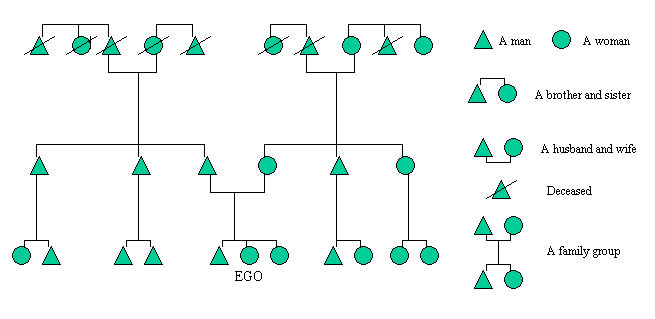| Return to main page |

Figure 38: Dr. Dylagowa's kindred
Continue the exercise by putting a mark by each individual in your kindred whom you have actually seen within the last twelve months. Do you see any patterns? What conclusions might you draw about the importance of kinship in modern cultures?
Ania and Tom performed this exercise conscientiously and she saw for the first time the very patrilineal way in which he was related to Maria: her father's father's father was a younger brother of his father's father's father.
In the tram on the way back to the dormitory they could not help noticing two young East Asians, who looked as if they might have been brothers. Tom wondered how their genealogies might compare with those of the European and North American summer school participants, but he remembered his teachers' opening remarks about accosting strangers. They talked instead to each other about the importance of family ties in their respective diaspora communities in London and Chicago. Tom explained some of the conflicts he himself had noticed in Bridgeport, where families of first and second generation immigrants found it very hard to get along with those who left Poland only in the late communist period.
'They are just two different communities,' said Tom, 'and even close kin ties cannot always close the gap. I have a cousin in another district of Chicago to whom I am biologically closer than I am to Maria. But according to my parents, his side of the family is only interested in money. They have no pride in the history of Poland and none of them go to church, so we hardly ever meet up.'
| Return to main page |